A Beginner’s Guide to Watercolour Painting: Tips to get started
Want to try out Watercolour Painting but not sure where to start? Our beginners’ guide could be just the read for you. Watercolour is a common choice for new artists, but can seem deceptively simple. Here we aim to dispel the myths, and offer help, tips and advice that will get you off to a head start.
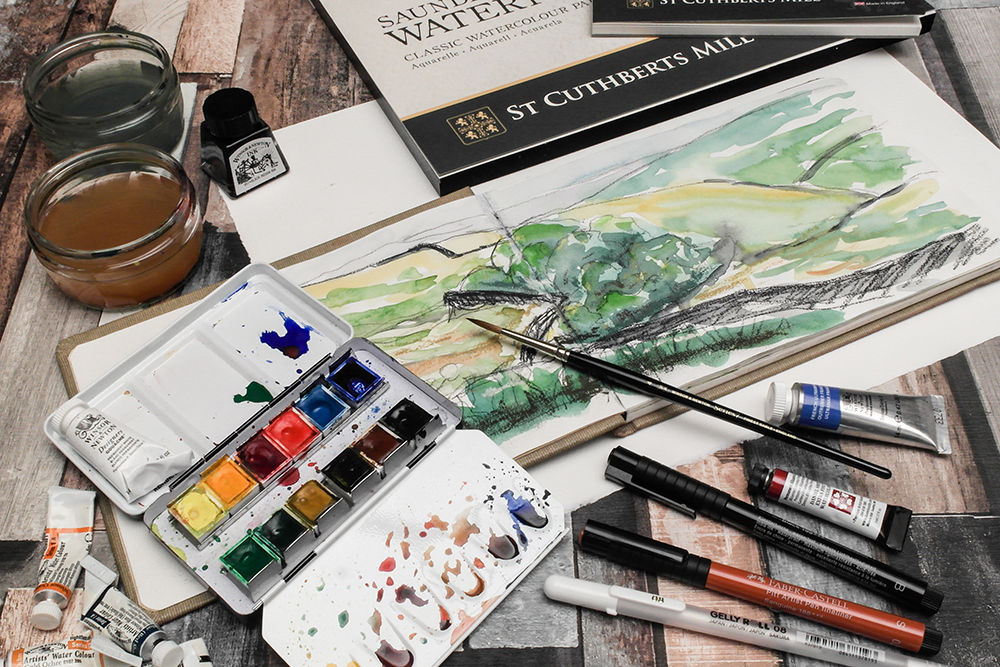
Watercolour Painting is a popular painting medium that is a common choice for artists just starting their creative journey. It’s both fun and affordable, and also requires relatively few materials if you compare it to oil and acrylic painting. On the face of things, watercolour painting can seem relatively simple. Just get your paints, your brushes, some paper and a little water and you should be good to go – right? But which watercolour paints would be best for you? Do you need to buy natural hair or synthetic brushes? Would you know the difference between the watercolour papers available? We hope to kick start your creativity with a quick rundown on the things you’ll need to consider when you begin watercolour painting to get you off to a great start.
How to Paint with Watercolours
Watercolour painting is great in that you only need a few colours, a brush, some paper and a jar of water to start. With watercolours, you’ll begin your painting with the lightest values and slowly build up layers of transparent paint into rich washes of colour. Artists commonly use watercolour paints on paper, but there are other more experimental grounds you can try.
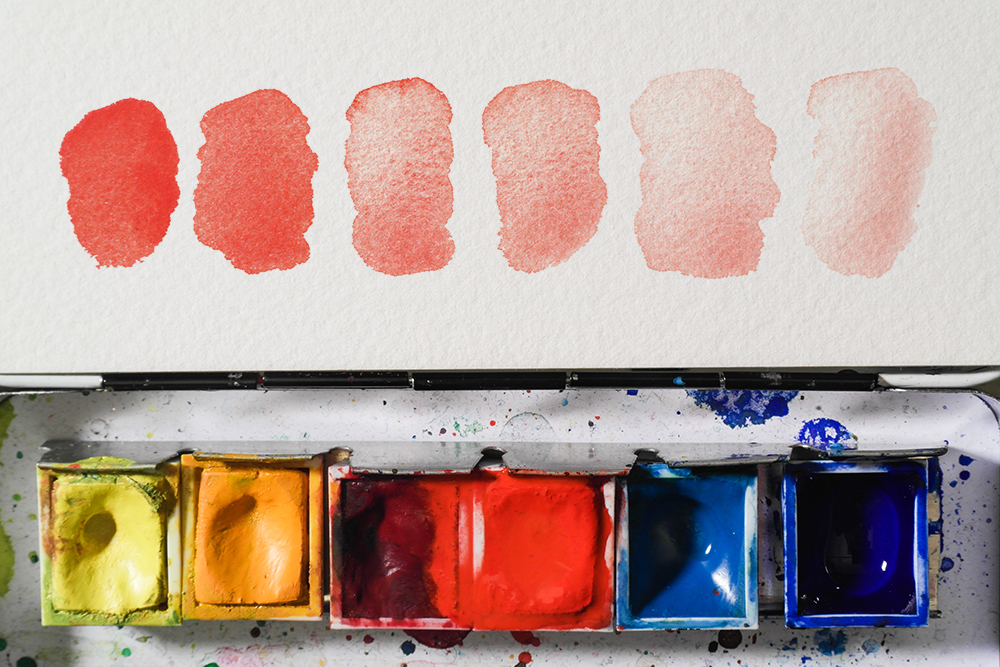
Unlike oil paints, Watercolours don’t require any solvents or other chemicals to use. Just get a container of water and you’ll have the basics for controlling your colour. You can adjust the intensity of your colours by varying the amount of water you use to dilute your paint. Use just a little bit of water to create punchy, vibrant hues. Take these intense colours and add more and more water, painting swatches of each mix as you go along. You should see that the more water you add, the paler your colour becomes.
Watercolour is a popular choice with beginners because it only requires a few materials – but don’t let this fool you! Watercolour painting may appear simple, but it can take lots of practice to get a hang of.
Choosing Your Watercolour Paints
Take a look at our selection of Watercolour Paints and the amount of choice may be overwhelming! With so many brands and variations of paint on the market it can be difficult to settle on the best paint for you. Ultimately the paint you settle on will come down to personal preference – and it’s likely you’ll have to try a few brands before finding the perfect paint for you. It’s worth going with the best materials you can afford. There’s nothing worse than becoming frustrated with a hobby because you’re working with materials you don’t gel with! Here are a few things to think about that should help you choose a paint suitable for you.
What is Watercolour Paint
Watercolour Paints are made from finely ground artists pigments suspended in a water-soluble binder – most commonly Gum Arabic. These are the two main components, but you may see other ingredients added like Ox Gall, Honey and Glycerine. This is something to watch out for if you want to avoid animal derived materials in your art supplies.
Student or Artist Grade Paint
You can start narrowing down choices by first asking if you need Student or Artist Grade watercolour paints.
Student Grade Watercolour Paints
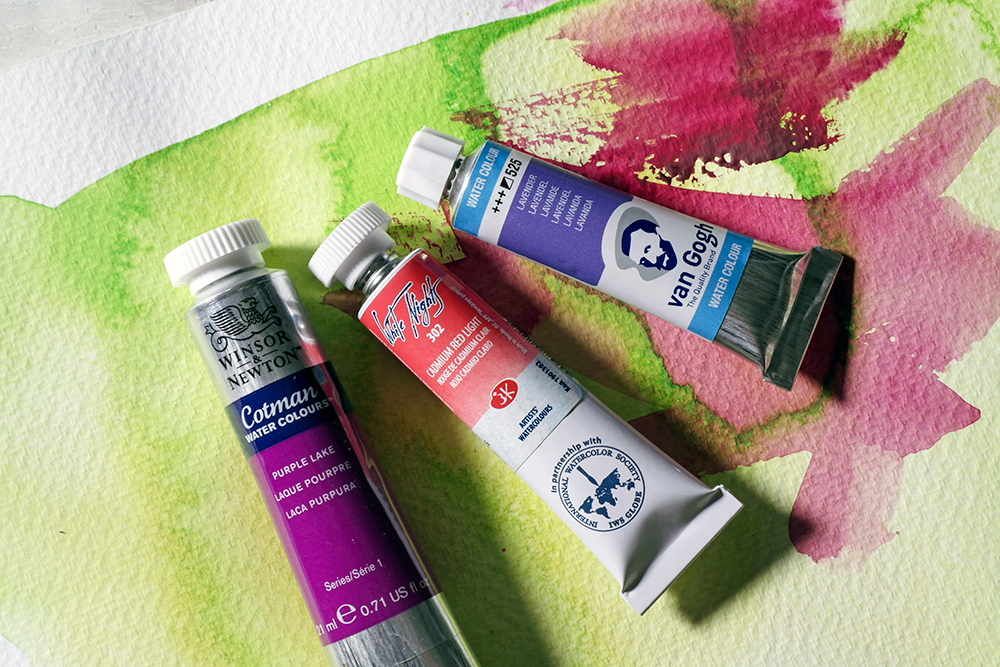
Student Grade watercolour paints are more affordable, but are usually available in a smaller range of colours. While the paint is good quality, these colours typically contain fillers and lack vibrance in comparison to artist grade. Manufacturers keep the costs of these paints down by substituting more costly pigments – like Cadmiums and Cobalts – with cheaper alternatives that give similar performance (you can identify these colours as they’ll have ‘hue’ in their name). Student quality paints can include a higher number of mixed pigment colours. This just means that the paint in the pan or tube is made up of sometimes two or three different pigments. While this can be good for convenience, it may mean that some of your colour mixes become a little muddy. Try putting too many pigments into the pot and your mixes can end up dull and lifeless.
Our student grade watercolour paints include Winsor & Newton Cotman, Van Gogh and Daler-Rowney Aquafine.
Artist Grade Watercolour Paints
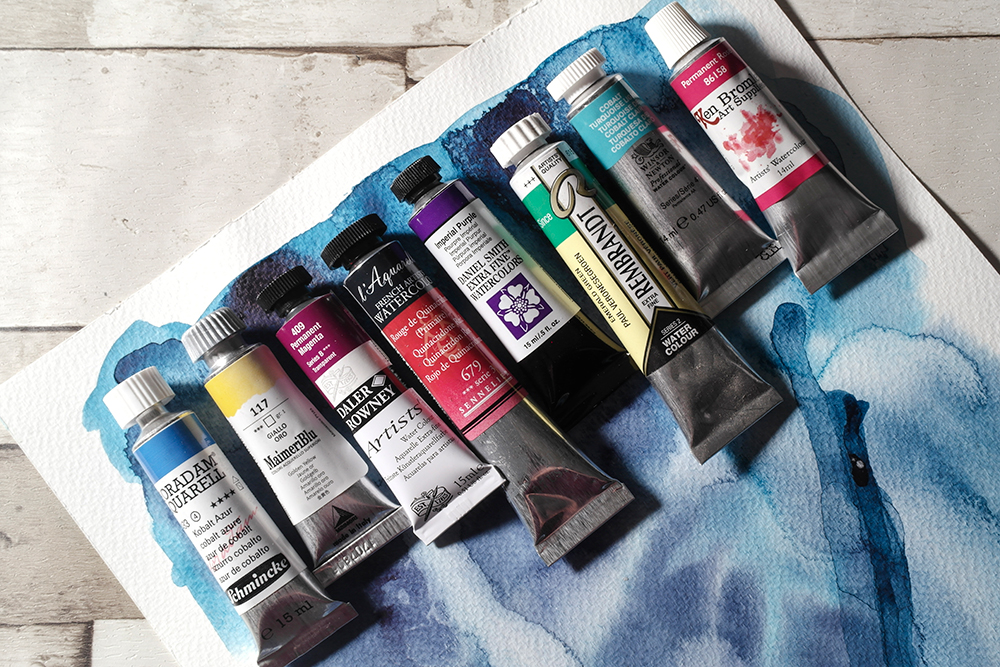
Artist Grade watercolour paints come with a higher price tag. But a little will go a long way! These paints use finely milled pigments and contain no fillers. You’ll find genuine Cadmiums and Cobalts in their ranks along with a more extensive colour range overall. These paints tend to be smoother, more vibrant and have excellent handling. While you’ll also come across mixed pigment colours in artists’ ranges, they do have a much higher ratio of single pigment colours. This, along with more vibrant colour in general, will make your colour mixes more dynamic and lively.
Series Numbers
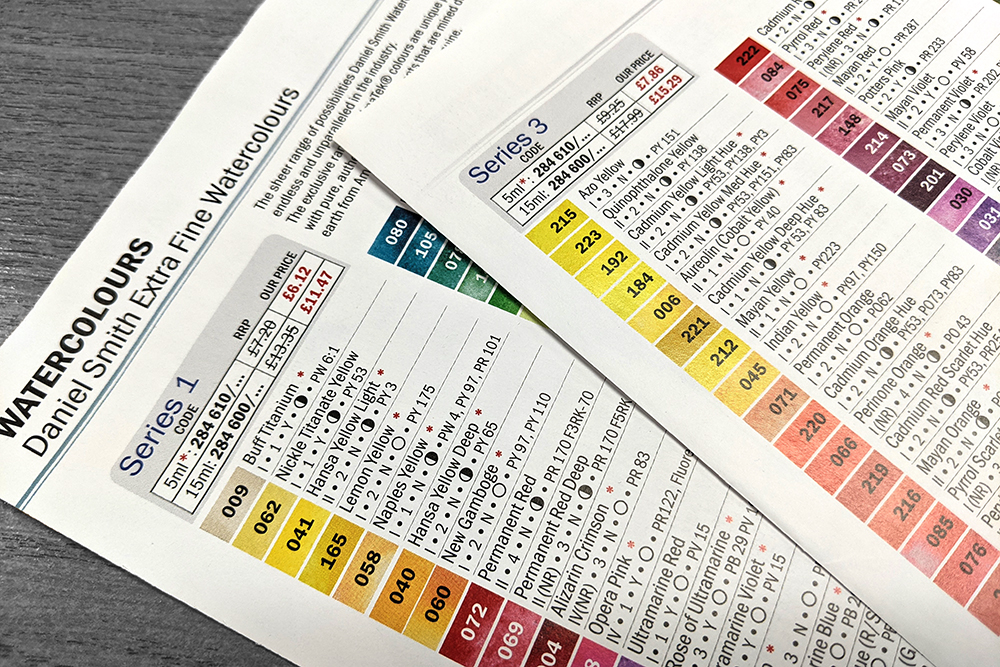
Looking at an Artists’ quality range, you’ll probably notice that the pricing isn’t consistent across a particular size of pan or tube. Each price bracket represents a different series, and is allocated a number. The lower the series number the less expensive the paint will be. Despite this price difference there is no difference in quality in paints across series. Whether you’re buying Series 1 or Series 5, the paint inside the tube will be the exact same quality. Instead, the price difference boils down to the cost to the manufacturer of making that particular colour.
Our Artists ranges include Winsor & Newton Professional Watercolours, Daniel Smith Extra Fine Watercolours, Schmincke Horadam Aquarell, QOR Watercolours, Sennelier L’Aquarelle and Daler-Rowney Artists’ Watercolour.
Pans or Tubes?
Watercolour Pans
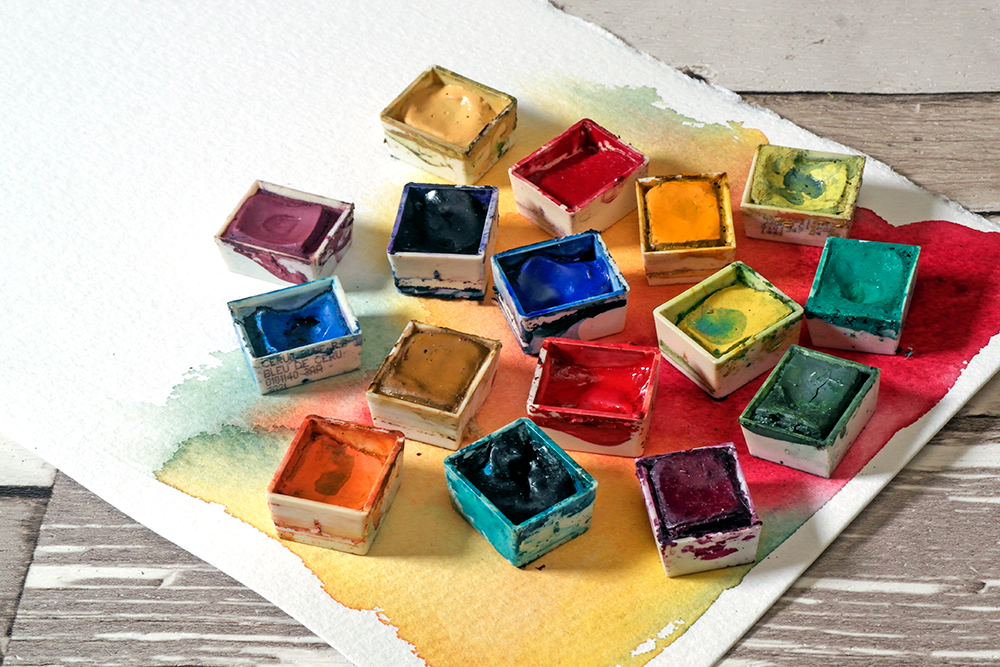
Pans are small plastic containers that hold dried watercolour paint. Watercolour paint pans can look slightly different depending on whether the paint has been extruded or poured into the pan. Extruded paint pans appear more like a solid cake of colour – they’ll look ‘cut’ into their cube shape and may stand out a little from the pan itself. Poured pans are made by pouring in liquid watercolour paint into a pan in stages. This results in a pan with a smooth finish that is almost level with the top of the plastic container.
You can pop watercolour pans into a paint box or travel palette. These palettes have rows or compartments that hold your pans in place. Because of this, they’re popular with artists working outdoors or on the go. You can easily fit a small paint box into a bag or pocket, so they’re perfect for plein air painting, urban sketching and taking to classes.
To activate the dry colour you’ll just need to sweep over the top of the pan a few times with a wet brush. Your brush will be loaded with colour that can be used to paint or mixed on a palette. It can be difficult to get a large, concentrated wash of colour from a pan. You’ll need to repeatedly rub at the pan with your brush to release large amounts of paint for large washes. Spritzing your paints with a spritzer or spray bottle and letting them sit to soften for a while before you paint can help you release colour easier.
Watercolour Tubes
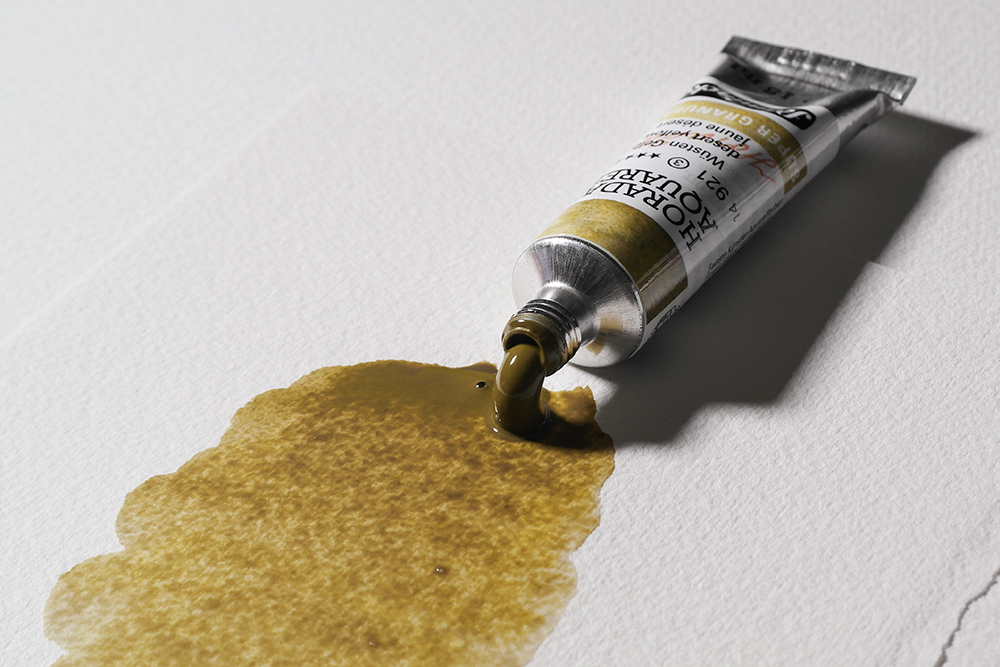
Tubes contain fluid watercolour paint you can squeeze into a paint box or onto a palette. You can squeeze out as much paint as you need – perfect if you’re working with large, concentrated washes of colour. It’s much easier to just squeeze a blob onto your palette and dilute to an appropriate strength, rather than waste time trying to get the same quantity of colour from a pan. When tube colour dries it is still completely useable. Just use it like you would pan colour and you’ll be able to reactivate the paint.
They are a little more difficult to transport. You’ll need to source an appropriately sized box to hold them in, and they’re a little more work to use when you’re out and about.
Watercolour tubes can seem expensive – especially when you compare them to Oil and Acrylic paints, given their tubes are so small. But a little bit really goes a long way!
Properties of Watercolour
Watercolour paints have some properties that you won’t see in either Acrylic or Oil paints. You might come across an ‘S’ or ‘G’ symbol next to a colour on a manufacturer’s colour chart. These denote ‘Staining’ and ‘Granulating’ colours.
Granulating Colours
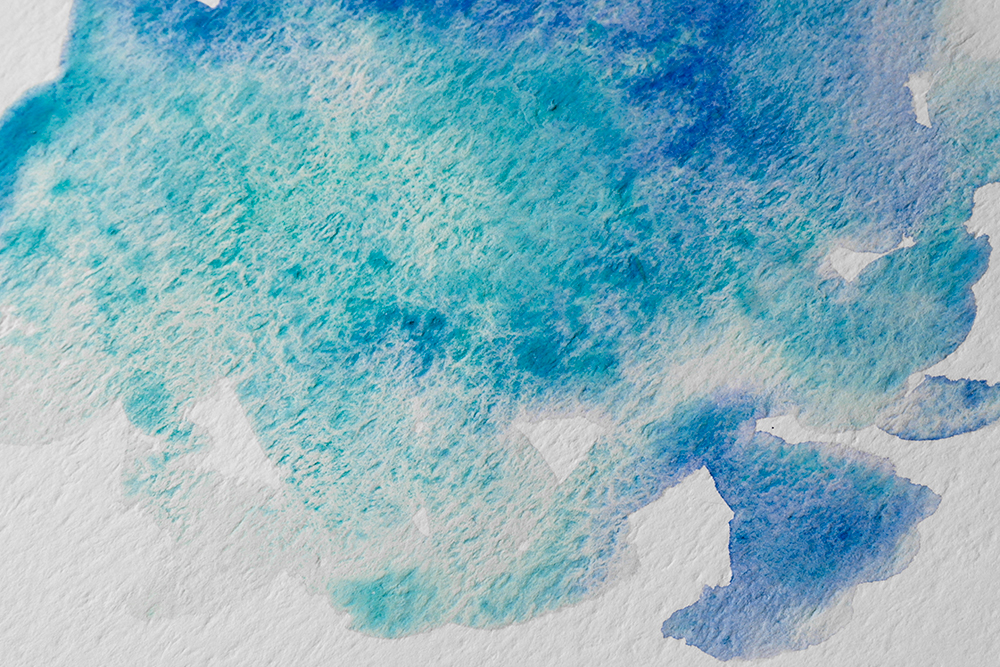
A granulating colour creates a mottled effect as it dries. The mottle appears when pigment sinks into the troughs of texture in your paper. Because of this, it’s much more dramatic on rough texture paper.
Staining Colours
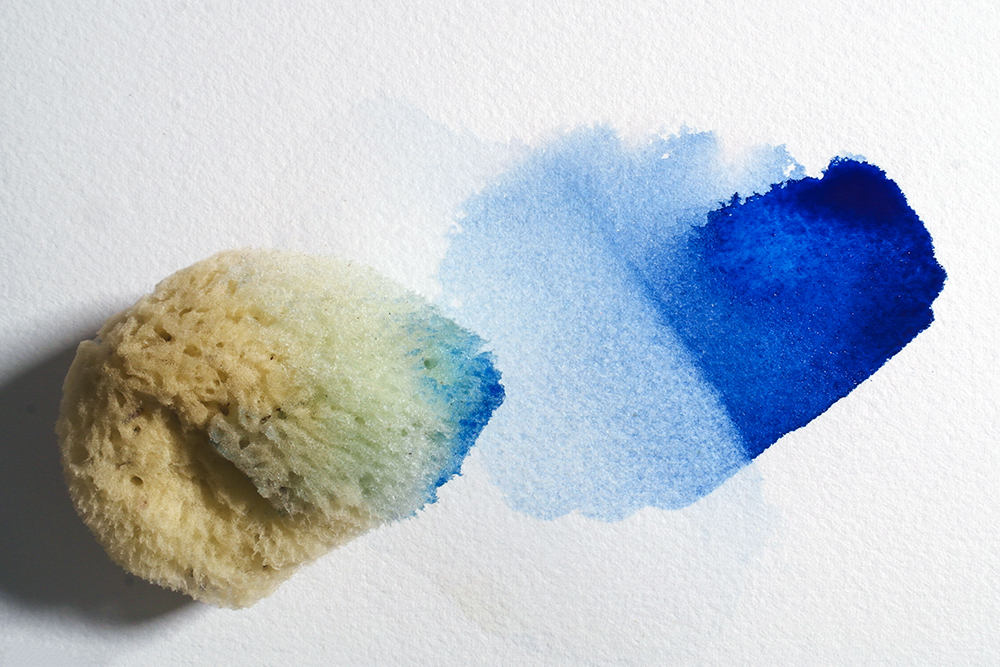
Staining means that a colour is very hard to lift. These colours can leave residue on your palette and will be very difficult, if not impossible, to remove fully from your paper. Staining is valued by artists working with layering or glazing techniques as the colour won’t lift as you add subsequent layers.
These kinds of properties are down to the unique workings of each pigment. Not all colours are staining or granulating, so if you want these particular properties then check the manufacturer’s colour charts before buying.
Choosing your Colours
To begin with you’ll probably need a broad range of colours suitable for a variety of subjects. Most of our Watercolour Paint Sets include a set of chromatically balanced colours perfect for mixing and exploring colour theory. A lot of them also include boxes with mixing space too – some even have accessories – which are perfect if you want to paint outdoors or at a class. There are some sets (like our Cotman Pocket Sets and Daniel Smith Half Pan Sets) that offer colour selections geared towards more specialist subjects like portrait or landscape painting.
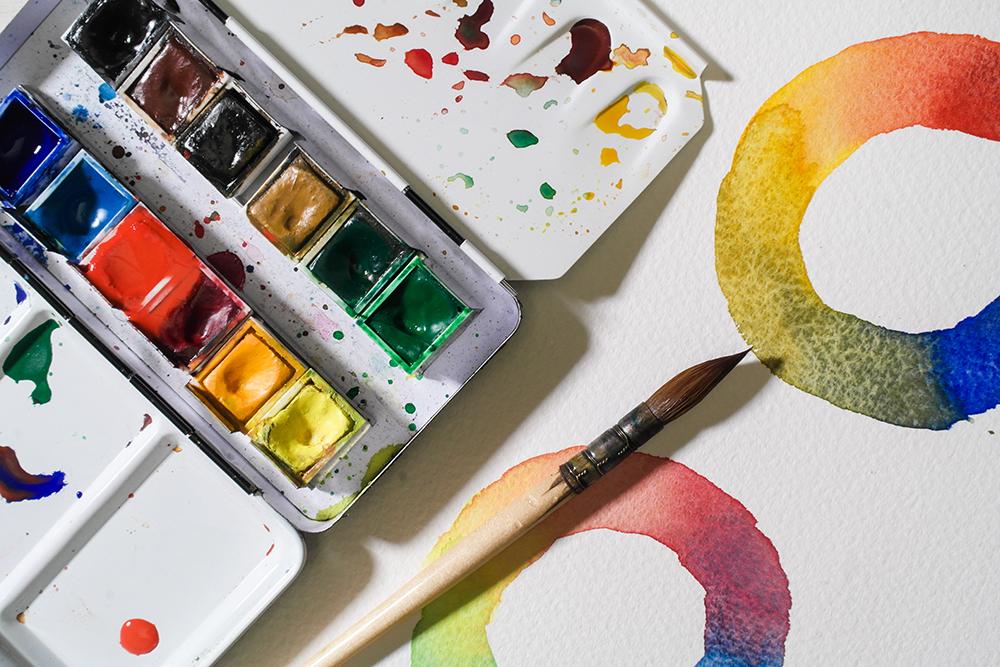
A lot of sets include black and white watercolour paints. Traditionally you would use the white of your paper as your ‘white paint’ – so you may find that using white is frowned upon if you are taking a class. Similarly, a lot of artists find that black is too harsh and prefer to mix their own chromatic blacks or swap them out for Payne’s Grey. That being said, both black and white watercolours exist, so don’t let other artists discourage you from experimenting with them and working them into your technique!
Looking to make the move to more expensive watercolours?
Maybe you’ve come as far as you think you can with student grade colours and are looking to upgrade to professional paints? It’s always best to try out a few tubes here and there from different brands to get a feel for the type of paint you like working with. Try switching out some of your most used colours with professional versions first, then slowly add in more interesting and unusual colours as you progress.
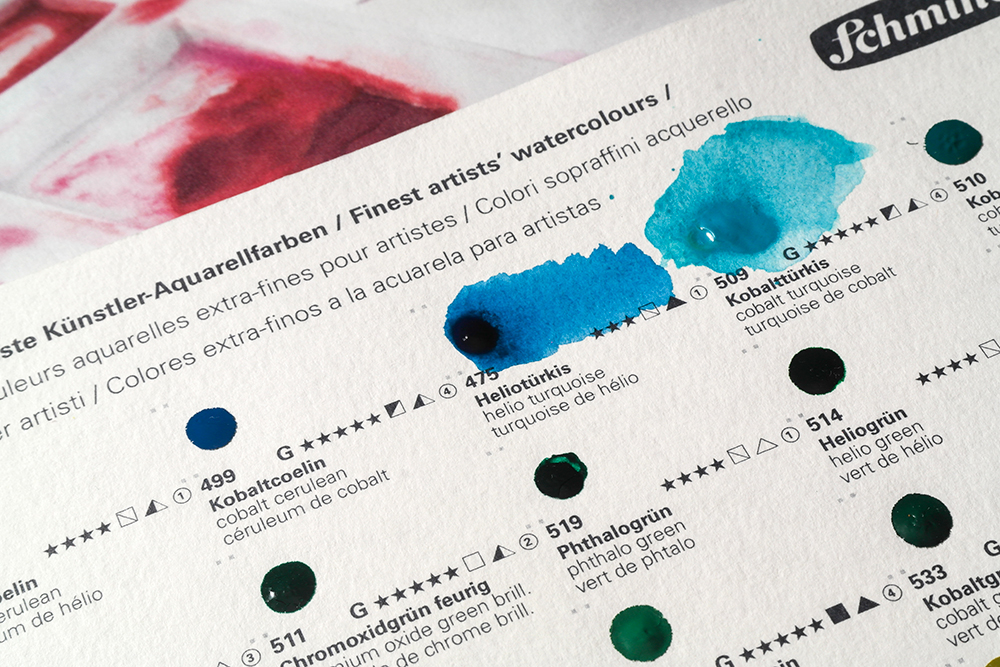
A great way to try out a new range without the outlay of buying full tubes of colour (that you potentially won’t like!) is to buy a Watercolour Dot Card. Dot cards can cost up to around £20 – although we occasionaly offer freebies you can add to your order. They contain a small dab of paint that is big enough to create a swatch of a decent size. You activate them like a pan – just sweep over a wet brush and paint out the colour. Use your swatches to decide which colours to try next.
Choosing a Watercolour Brush
There is such a wide range of watercolour brushes available to today’s artists that it’s easy to feel spoiled for choice. Manufacturers realease new shapes and fibres all time time. While it’s easy to get distracted by some of the latest innovations, you’ll probably find that a few sizes of a few shapes of brush will get most of the work done.
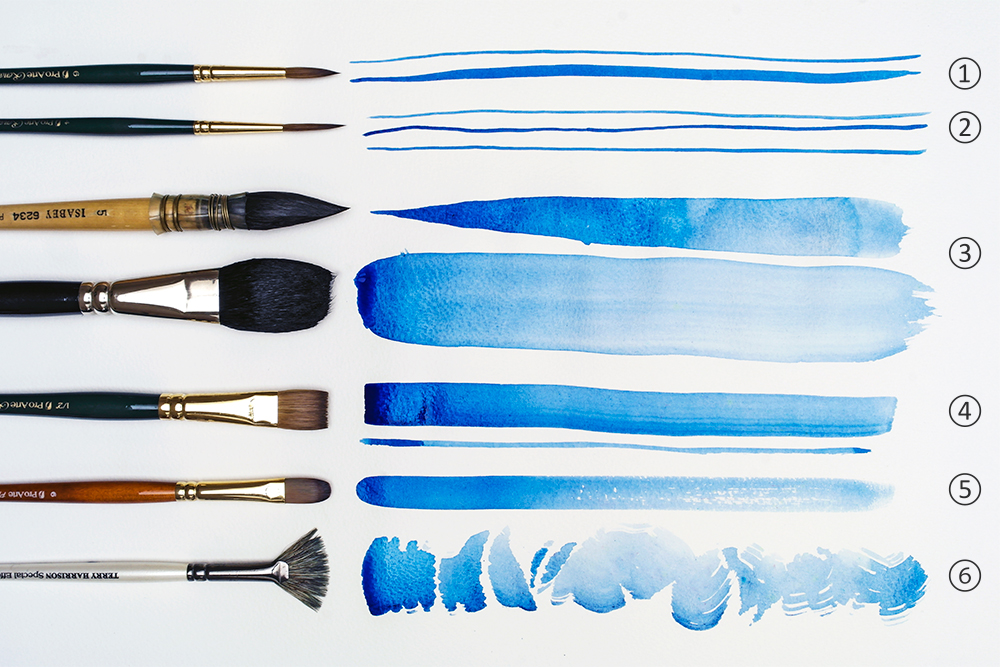
Different Brush Shapes
1. Round
Round brushes will probably be the workhorse out of all your brushes. This shape has a round profile at the ferrule and tapers to a fine point at the tip. Use the tip to create fine detail strokes, or apply more pressure for wider strokes.
2. Riggers
Riggers are similar to rounds but have much longer hair. They’re perfect for painting long, fine lines – like the ship rigging that they’re named after.
3. Mops and Quills
Mops and Quills can be useful if you’re painting large washes. Quills have extra large, round bellies that taper to a fine point. Mops have densely packed bristles in a rounded shape. Both hold exceptionally high volumes of colour or water, so are great for covering large areas.
4. Flat
Flat brushes can be useful for covering large areas or for creating angular strokes. Use the large flat side of the brush for the best coverage, or twist to use the edge of the brush for thinner lines.
5. Filbert
Filberts have a similar profile to flat brushes. However – instead of having quite sharp, defined edges at the tip – they are gently rounded. Their oval shape creates a round stroke useful for painting petals and blending.
6. Fan
Fan brushes have tips where the fibres fan out into a canopy formation. They’re great for painting special effects, creating texture and soft hair fan brushes are also used for blending.
There are so many different types of brush shape to explore. Start with a few round brushes, maybe even a flat, an explore from there. Our Watercolour Brush Sets are useful for new watercolour artists as they include a popular selection of brushes for starters in a good range of shapes and sizes.
Synthetic or Natural Hair?
Watercolour brushes can broadly be split into two categories – Synthetic and Natural Hair. While the brushes you enjoy using will mostly come down to personal preference, there are certain things worth knowing about the two types before you invest in good brushes.
Natural Hair Watercolour Brushes
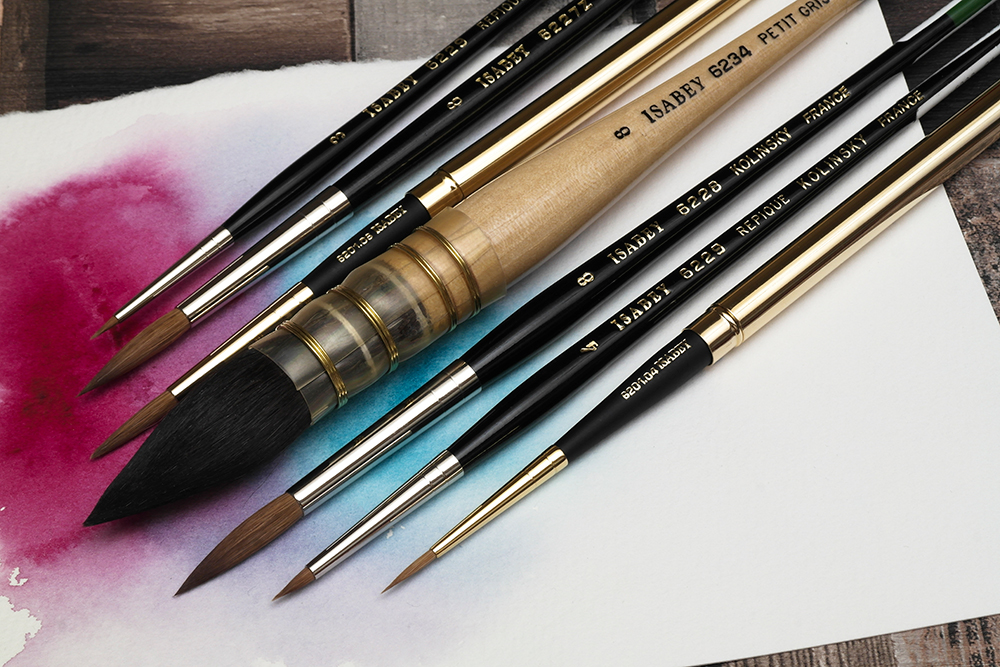
Natural Hair watercolour brushes are typically made from sable or squirrel hair (although you may come across other hairs, like goat). These are all natural fibres manufacturers source from animals. They are definitely something to avoid if you’re a vegan artist, or just someone looking to cut down on animal derived materials. Natural hairs have an incredible microscopic structure of interlocking scales – something that means they’re capable of holding incredible amounts of water. This means you’ll need to reload your brush less, and you can create long winding strokes or large washes in one fell swoop.
If you want to try natural hair but don’t have a budget to stretch, why not try a natural/synthetic blend brush? These brushes contain a mixture of both synthetic and natural hair – offering the colour holding of natural hair and the durability of a synthetic.
Synthetic Watercolour Brushes
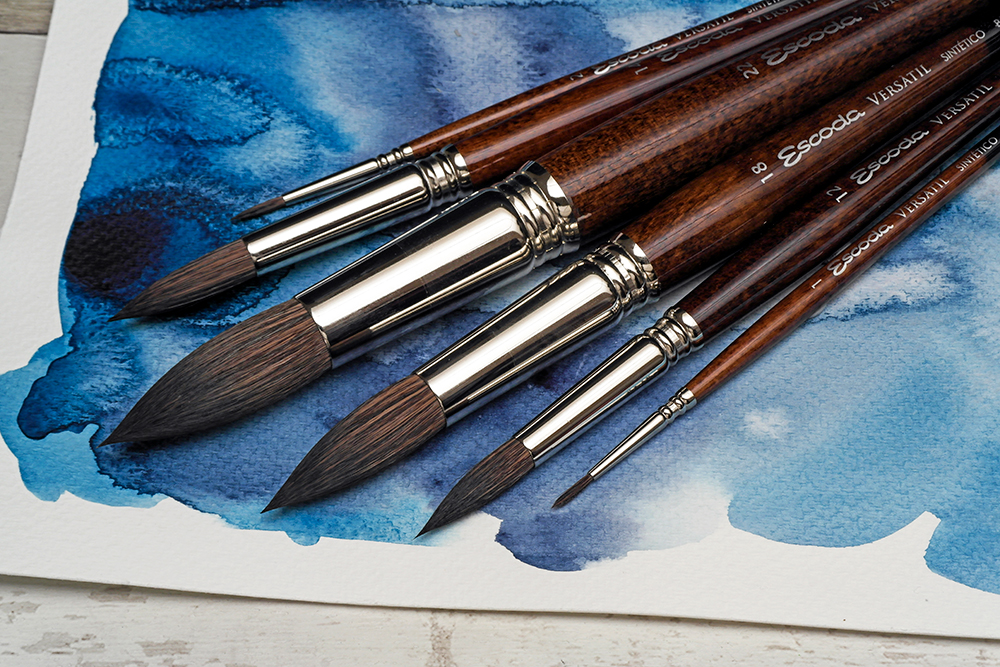
Synthetic brushes are manufactured from man-made materials. In their infancy they were seen as inferior to natural hair, but today’s synthetics have come a long way since then. Higher end synthetics (like Versatil, Casaneo and Aqua Elite) offer such professional performance that it’s almost impossible to distinguish them from their natural counterparts. These types of synthetics are specially made to mimic the working properties of natural hair. Other synthetics are available that are a little stiffer and hold less water or colour. These can be great for creating fine details, although you’ll have to reload more. One big advantage of synthetics over natural hair is their durability. Natural hair requires lots of care and careful cleaning to keep it in the very best condition. While proper care can mean your natural hair brush will last a lifetime, Synthetic brushes are a lot more forgiving of use and abuse.
Watercolour Painting Accessories and Auxiliaries
Watercolour Painting Mediums
There aren’t as many mediums available for Watercolour as there are for acrylics, but don’t let that make you think that they won’t add versatility to your work! Watercolour Mediums are a range of fluids and pastes that you can mix with colour to add body, create texture or even induce granulation in colours that wouldn’t otherwise granulate.
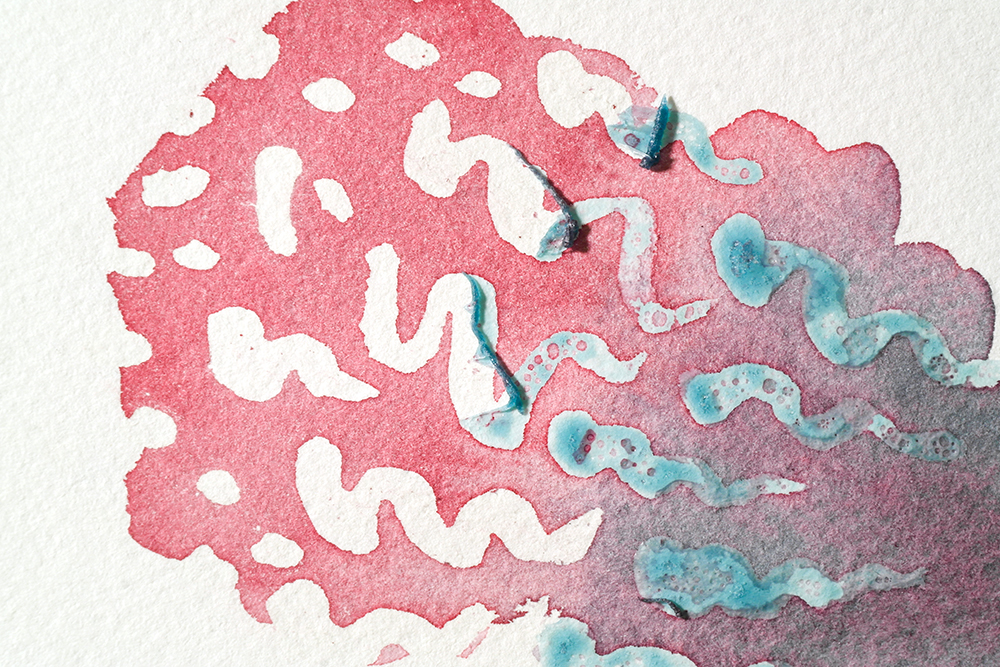
Masking Fluids are perhaps one of the most popular watercolour mediums. These are latex-based, tinted fluids you can apply to your paper with a ruling pen, colour shaper or an old brush. Wherever you apply the fluid the white of your paper will be preserved. Masking fluid is best applied thinly on dry paper, and be sure to take care when you remove it! Too much pulling and rubbing can cause the top layer of your paper to tear, potentially ruining your painting. Leave the masking fluid on only for as long as you need to, then rub gently to remove. If you find it difficult to remove masking fluid without tearing your paper, why not give our Maskaway Masking Fluid Remover Block a go? Masking Fluid is hard to remove from brushes. If you are using a brush and clog it with masking fluid, try removing it with Zest-It Masking Fluid Remover.
Choosing a Watercolour Palette
Watercolour artists have a few difference types of watercolour palettes to choose from. Some are more affordable (metal and plastic) while others can be a little more expensive (porcelain) – so it’s important to know the differences in how they behave before you make a purchase.
Ceramic Palettes
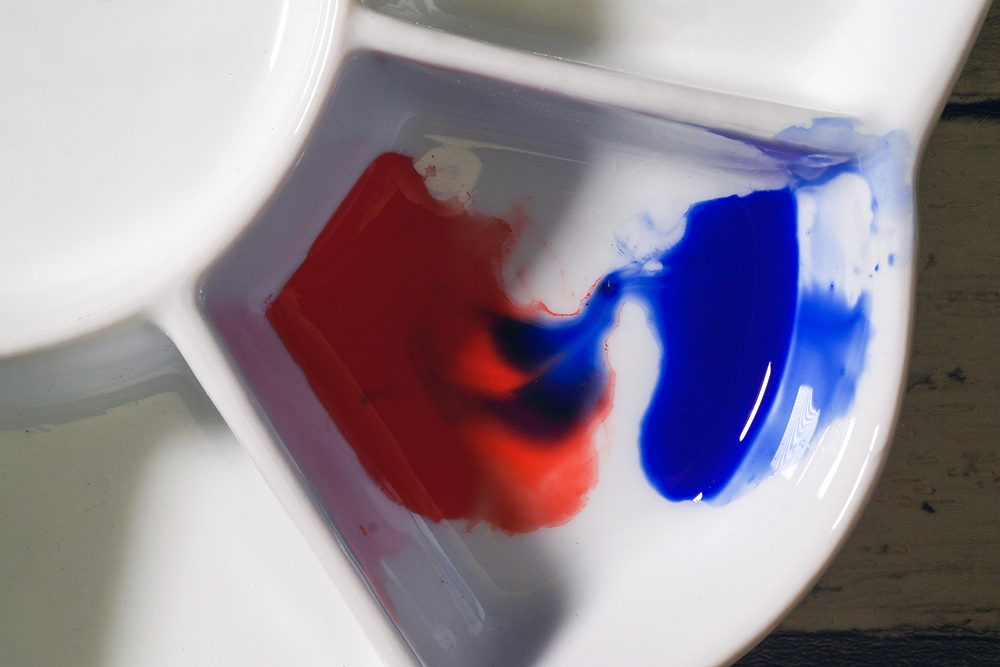
Ceramic or porcelain palettes are the very best palettes to use with watercolour – if your budget will allow. They have a completely impermiable surface, so are less likely to stain and are super easy to clean. However, these palettes can be quite heavy. Not only does this make them more cumbersome to carry around, they’re also very easy to break if you drop them. They may not be the best choice for painting on the go, but they’re certainly king in the studio. Watercolour paint also beads up a lot less on a porcelain surface. This makes it easier to create large mixes and gives a better idea of the colour. If you’re looking to work on porcelain but can’t afford a porcelain palette just yet, try using a ceramic saucer for similar results.
Plastic Palettes
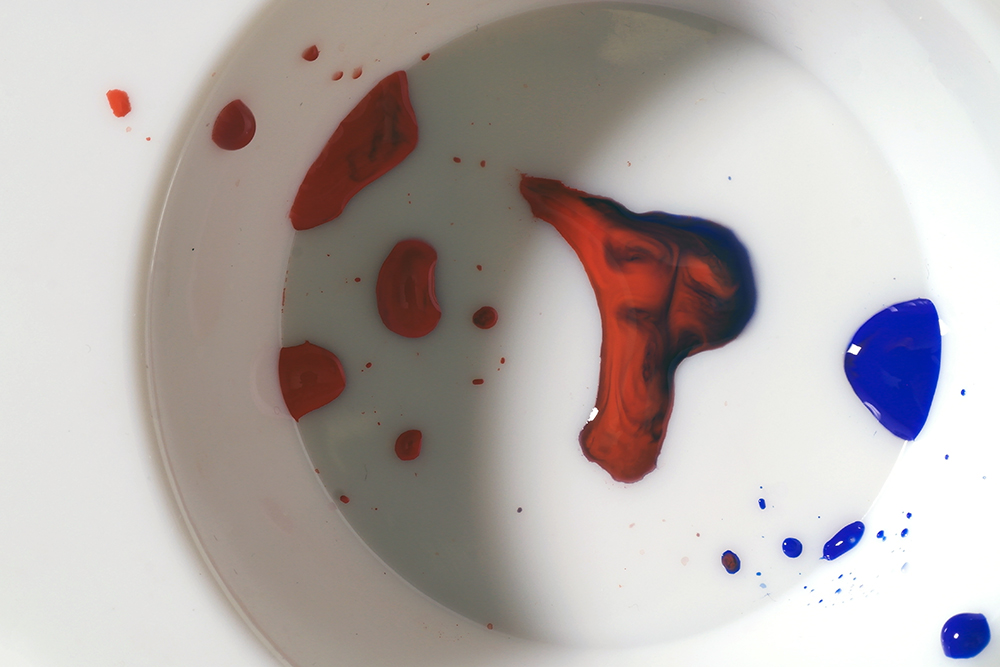
Plastic Palettes are very inexpensive, so they’re great for artists working with small budgets. Lightweight and portable, these palettes are perfect for taking on painting trips or to classes. One downside to plastic is that it does stain quite easily and is difficult to clean back to pristine white. You’ll also find that the paint has a tendency to bead up on the palette’s surface. Your mixes will split off into smaller blobs of colour that makes it difficult to judge their colour. You can roughen up the surface with something slightly abrasive (like fine grain sandpaper) to reduce this effect. Doing this will make the palette harder to clean, and may damage very soft natural hair brushes over time.
Metal Palettes
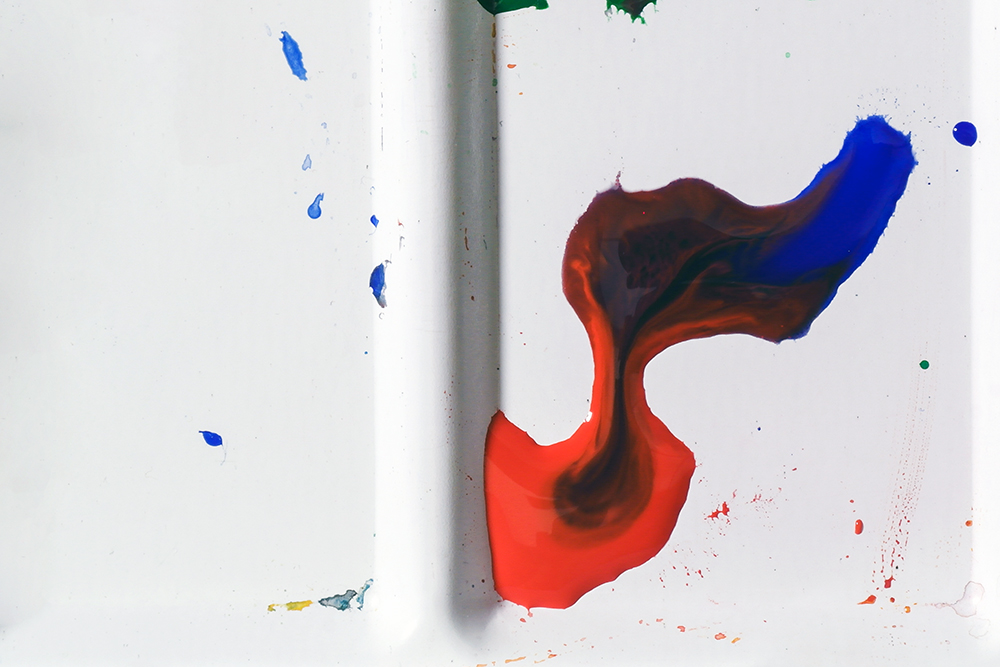
Metal Palettes are also a popular, economical choice. They perform similarly to plastic in the sense that your colour is likely to bead. It is possible to roughen the surface, like you would with plastic, to stop this to some extent.
Choosing Your Painting Surface
Watercolour Paper is the most common surface artists’ use with watercolour paints. However, in recent years art brands have come up with new products that let you enjoy working with watercolour on all kinds of exciting surfaces.
Working on Watercolour Paper
Watercolour Paper is the traditional surface for watercolour painting. Papers made from cotton linters or a cotton and woodpulp mix are most common, but you can come across papers made from sustainable materials like bamboo and agave. Unlike other papers, watercolour paper is heavily sized. This sizing is like a glue that seals the paper and stops its surface soaking up all your paint. Instead, your colours will lie radiantly on the top of the paper retaining all their brilliance.
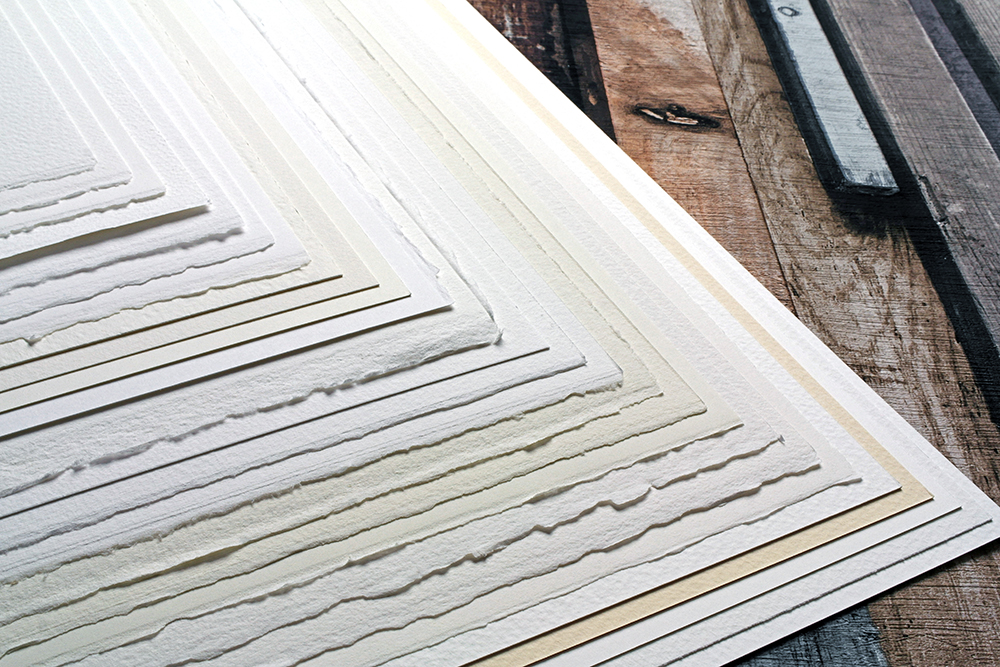
Watercolour Paper is also available in a wide range of formats. As a beginner you’ll have to choose between loose sheets, pads and blocks. You can easily stretch loose sheets or tape them to a drawing board, and they also come in much larger sizes than pads or blocks. Pads have a gum strip at one end, allowing you to flick through different sheets – working on more than one painting at a time. Blocks have glue on all four edges and partially negate the need for stretching. You can only work on a single painting at a time on a block as you’ll need to remove the top sheet before working on the sheet below.
Find out more about choosing watercolour paper in our Beginners’ Guide to Buying Watercolour Paper and How to Choose the Right Watercolour Paper blog posts.
Experimenting on Other Surfaces
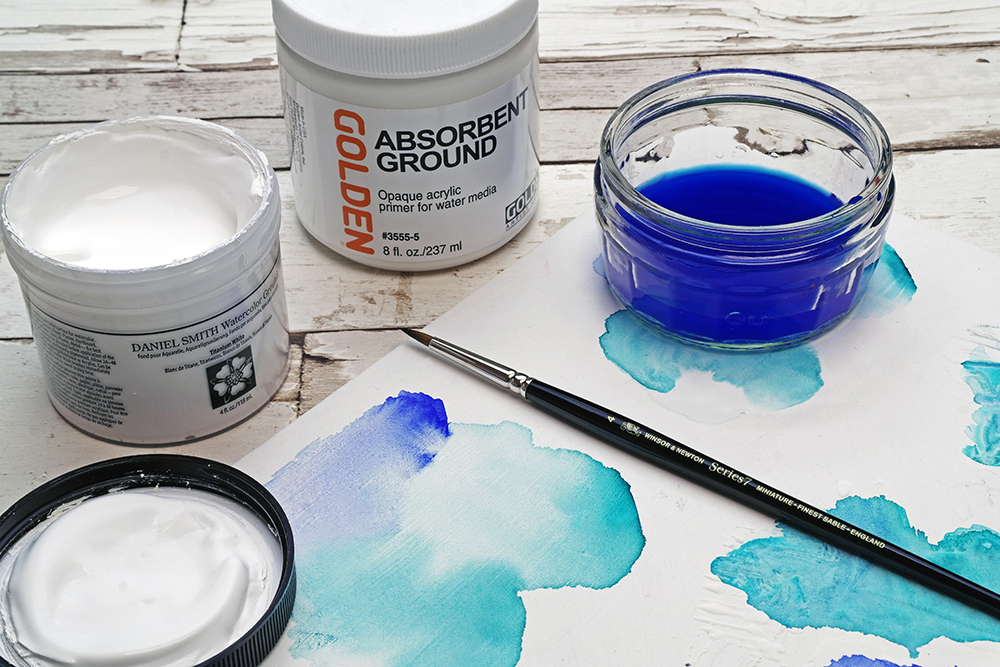
Thankfully, today’s artists have virtually no limits on what surfaces they can paint on. You can prepare many different surfaces with special painting grounds (like Daniel Smith Watercolour Grounds and Golden Absorbent Ground) to make them accept watercolour. This opens up the possibilities of working on panel, canvas, wood, metal and even glass. There are also pre-made watercolour painting panels, like Ampersand Aquabords, that take you out of of the paper-behind-glass niche.
Should You Varnish a Watercolour Painting?
Varnishing watercolour paintings is a highly debated topic. For many years watercolour painting has been stuck in a ‘framed behind glass niche’. It’s a fragile medium, so for many centuries the best way to protect and display paintings was behind glass.
The advent of new mediums, surfaces and varnishes means watercolourists are now able to paint on panels, canvas and more. This also opens up the possiblity of displaying work without glass in a gallery setting.
Ultimately you can varnish watercolour paintings, but it will make inalterable changes to your work. The saturation of colour may change, while certain colours may darken. It’s something you’ll want to test out on a sample area of your painting before you commit to it! Both brush on and aerosol varnishes are available. Check out our Daler Rowney Poster and Watercolour Varnish, Schmincke Universal Fixative or Golden Archival Varnish Aerosol if you’re looking to try varnishing watercolour.
Be aware that varnishing your watercolour can rule you out from submissions to certain galleries, competitions and group shows. There are institutions that require watercolour to be framed behind glass and would view a varnished watercolour painting as a mixed media piece. If you have plans to exhibit then double check the rules and regulations of the competitions and exhibitions you are entering!
Cleaning up Your Workspace
Watercolour paint is easy to clean up using just soap and water. Just take a damp rag and mop down any spillages or paint splashes.
While you can clean watercolour brushes using a mild detergent, using Artists’ Brush Soaps will help keep your brushes in the very best condition. This is especially true of soft, natural hair brushes. Their hairs are much more delicate than durable synthetics, so you may find detergent too harsh and drying. It’s best to keep in the habit of cleaning your watercolour paint brushes after the end of your painting session, but it isn’t the end of the world if they are left with paint residue in the hairs. Unlike acrylic, you can rinse out watercolour paint once dry. So just make sure to thoroughly wash out your brushes before you paint with them again. It’s worth noting that detergents will interfere with the performance of your watercolour paper, so make sure to clean out any soapy residue before you begin painting.
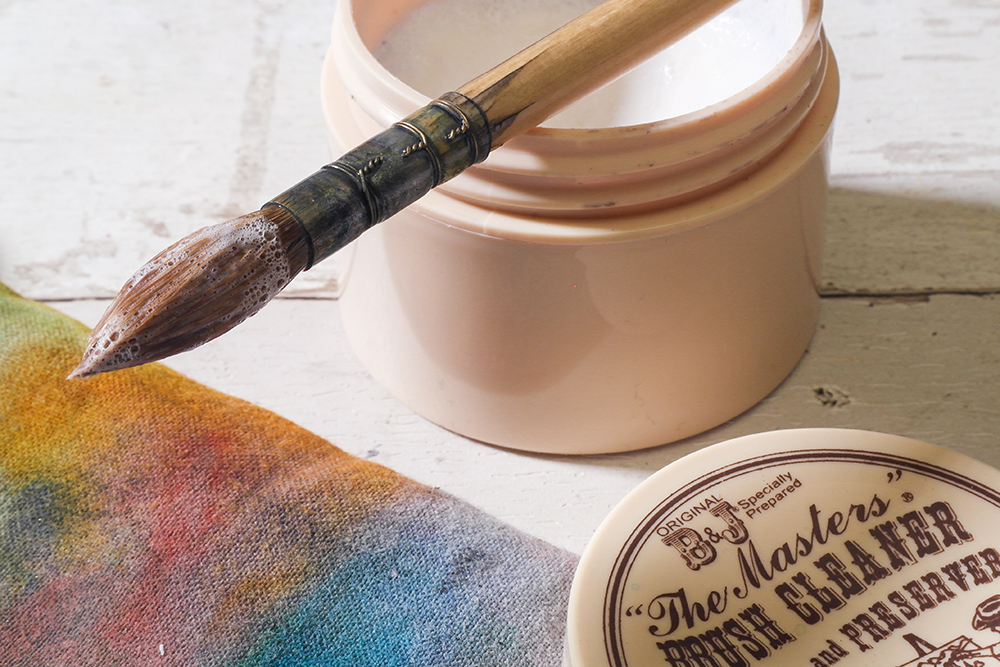
You should always dispose of rinse water responsibly. While it may seem less hazardous than oil painting solvents or acrylic waste, watercolour rinse water does still contain pigments that can be potentially harmful to the environment. You can leave waste water to evaporate from a waste container. Remove any paint residue with a damp cloth and dispose of the cloth according to your local waste disposal guidelines.
Get Creative with Watercolour
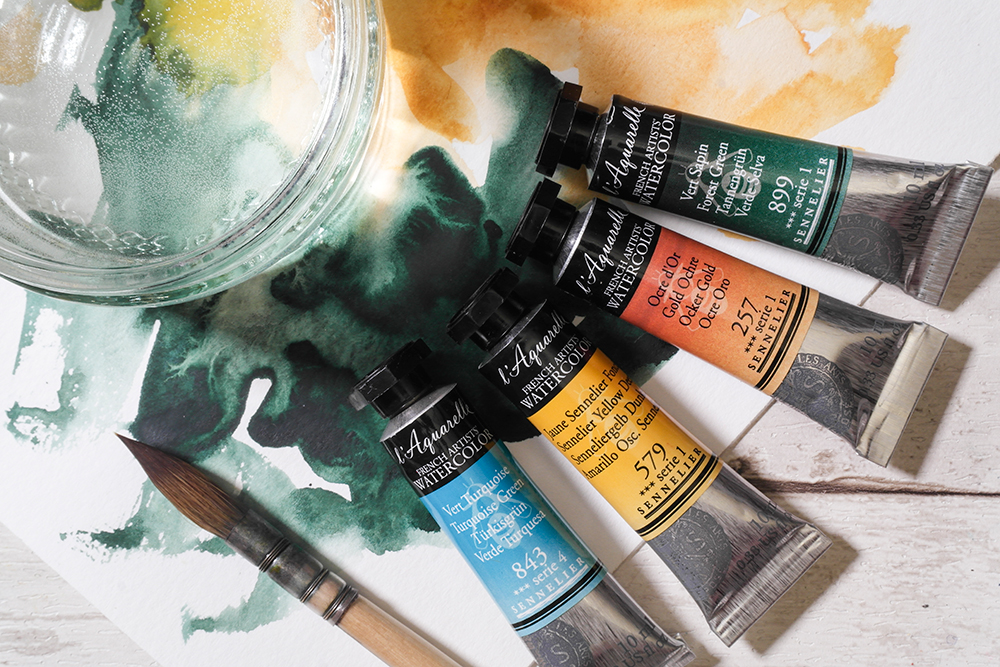
We hope this article will inspire you to give watercolour painting a go! Check out our website for art materials suitable for artists starting out in watercolours. Our watercolour painting sets are the perfect starting point for beginners. We also have plenty of watercolour art books filled with more specialist watercolour techniques if you’re looking for intruction on a particular topic.
Looking to experiment with watercolour painting? Why not try out some of our watercolour tutorials? A great next step for any beginner would be to explore some of the most common watercolour painting techniques. Check out our 15 Watercolour Painting Techniques Every Artist Should Try to start experimenting!



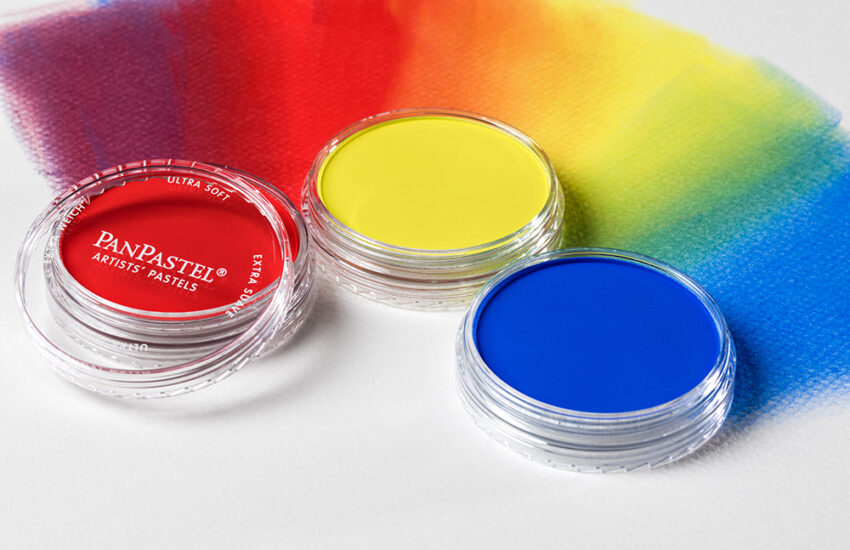
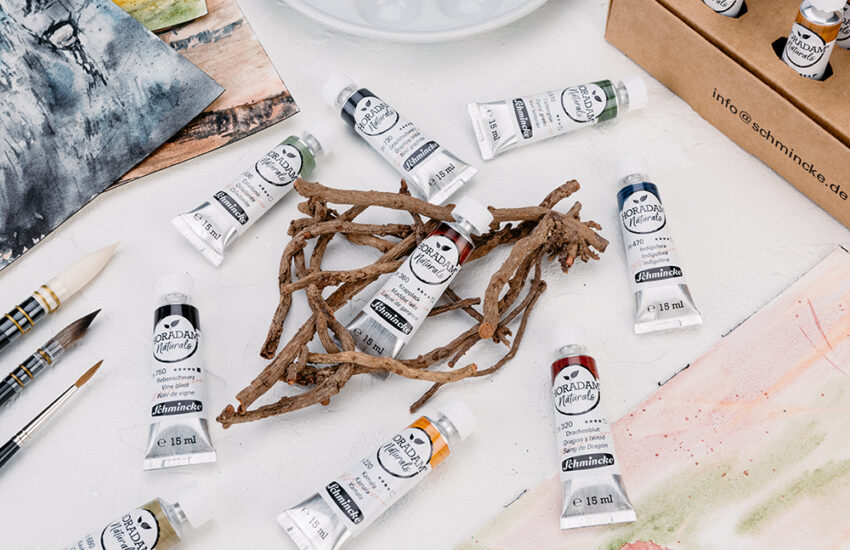
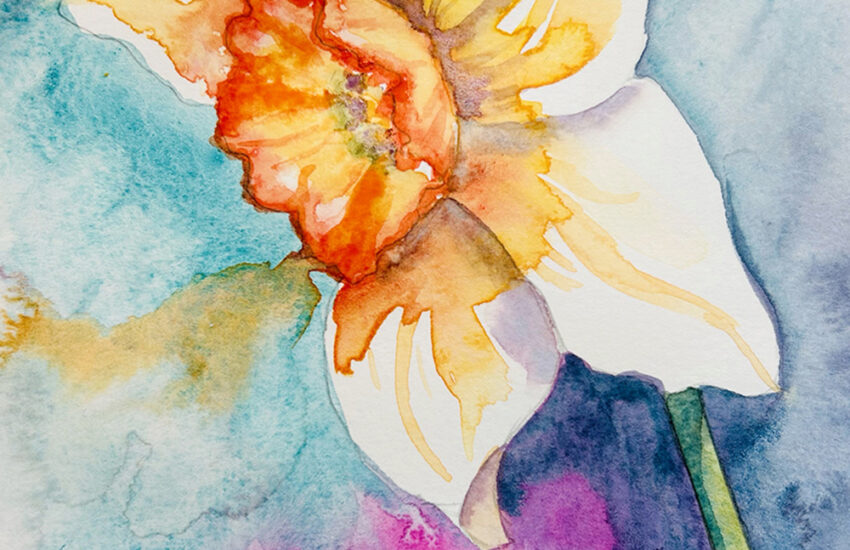
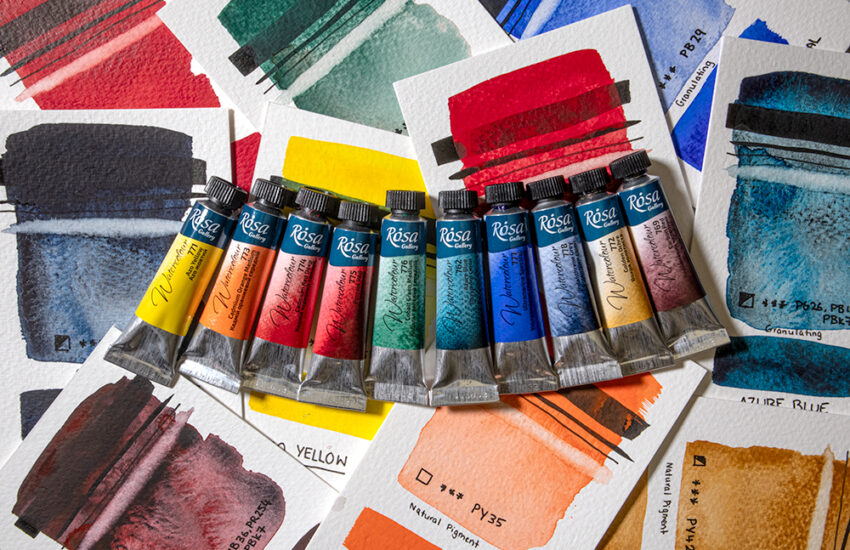


I have several old tubes of watercolour that have gone solid . Can I rescue them ? Help !
Hi Gail. Thanks for your comment. When watercolor tubes have gone solid, there’s still hope to bring them back to life as their gum arabic binder can be easily rewet. If you can, try adding a few drops of water into the tube to reactivate the colour. Repeat this, adding a little water at a time and you should end up with colour with a good consistency. It does require a little patience! Alternatively, if it’s safe and easy to do so, the tube can just be cut away from the dried paint. Once you’ve cut the tube away, you should be able to use the block of dried paint like a pan of colour.
I started painting again through lock down and have really enjoyed it. This blog was very useful a lot of information I had forgot and new products are coming out all the time, you never stop learning
I am in my seventies and starting out in a new hobby, watercolour paint. I found the above information
very helpful. Thank you.
Hi Marytn. Thanks for your comment. I’m really happy to hear that you found this blog post helpful! If you have any questions about using watercolour just let us know and I’m sure we’ll be able to help.
Hi, I really enjoyed this blog, and found it very useful. As a relative newcomer to watercolour and art in general I find all information really helpful. Many thanks.
Felicitaciones por esta iniciativa. Un gran refuerzo para principiantes como es mi caso, me jubilé y he encontrado en esta arte una alternativa maravillosa para vivir mis años dorados.
Gracias
(Congratulations for this initiative. A great reinforcement for beginners like me, I retired and I have found in this art a wonderful alternative to live my golden years. Thank you)
hi I have had a quick look at the information and find it to be very useful for begginners and experienced artists a like it lovely that you care enough to put such an informative a helpful blog together excellent information